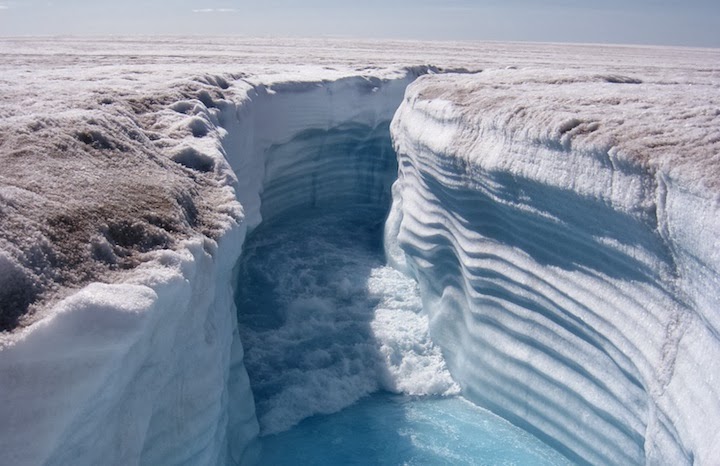The Greenland ice piece can experience intense reducing even when conditions don't hit history levels, according to a new analysis by Dr. Marco Tedesco, associate lecturer in the Section of The planet and Atmospheric Sciences at The City College of New You are able to. His results advocate that snow could experience a self-amplifying period of reducing and heating that would be difficult to prevent.
"We are finding that even if you don't have record-breaking levels, providing heated conditions continue you can get record-breaking reducing because of positive suggestions elements," said Professor Tedesco, who guides CCNY's Cryospheric Methods You and also assists on CUNY Scholar Center doctorate staff.
Professor Tedesco and his workforce obtained information for the analysis this recent summer time during a four-week trip to the Jakobshavn Isbræ glacier in traditional western Greenland. Their introduction beat the start the burn season.
Combining information obtained on the ground with microwave oven satellite tv files and the result from a style of the ice piece, he and graduate college student Meat Alexander found a near-record loss of ideal and ice this season. The comprehensive reducing extended even without last seasons history levels.
The workforce noted information on air conditions, wind speed, revealed ice and its movements, the appearance of channels and waters of burn water on the area, and the water's later burning away within the glacier. This dropped burn water can increase the ice sheet's move toward the sea where it calf muscles new icebergs. Gradually, burn water grows to the beach, leading to the growing sea levels associated with long-term coffee.
The style confirmed that reducing between May and May was well above the average for 1979 to 2010. In fact, reducing this year was the third most comprehensive since 1979, lagging behind only 2010 and 2007. The "mass balance", or quantity of ideal accumulated without the ideal and ice that dissolved away, finished up attaching last seasons history prices.
Temperatures and an albedo suggestions procedure included the history cuts, Professor Tedesco revealed. "Albedo" details the quantity of sun power consumed by the area (e.g. ideal, slush, or areas of revealed ice). A white cover of ideal shows much of direct sunlight and thus has a higher albedo. Simple ice – being black and taking in more light and power – has a cheaper albedo.
But taking in more power from the sun also means that black areas heated up quicker, just like the blacktop of a road in the summertime months. The more they heated, the quicker they burn.
And a season that follows one with history substantial conditions can have more black ice just below the area, ready to heated and burn as soon as conditions begin to rise. This also describes why more ice piece reducing can appear even though conditions did not break information.
Professor Tedesco likens the reducing procedure to a boosting water locomotive. Higher conditions act like fossil fuel shoveled into the furnace, increasing the speed of reducing. In this circumstances, "lower albedo is a down mountain," he says. The black areas obtain more heat. In this situation, even without more fossil fuel shoveled into the furnace, as a practice brain down, it results speed. In other words, reducing increases.
Only new decreasing ideal leaves the wheels on the procedure, masking the black ice in a indicative cover, Professor Tedesco says. The style confirmed that this seasons ideal couldn't cover for reducing in past years. "The procedure never stunted down as much as it had in the last," he revealed. "The wheels employed only every now and again."
The crew's results indicate that the procedure was not restricted to the glacier they visited; it is a large-scale effect. "It's a hint that not only do albedo and other issues are likely involved in speed of reducing, but that this speed is going on in many places all over Greenland," he advised. "We are currently trying to understand if this is a tendency or will become one. This will help us to improve designs predicting future reducing conditions and anticipate how they might develop."
Additional trip staff included Christine Foreman of Mt State School, and Ian Willis and Alison Banwell of the Scott Complete Research Company, Arlington, UK.
Professor Tedesco and his workforce provide their first success on the Cryospheric Methods You website. They will will be offering further success at the United states Geophysical Nation Community (AGU) achieving in San Francisco on November 5 at 9 a.m. and November 6 at 11:35 a.m.
The analysis was recognized by the Nationwide Technology Groundwork and the NASA Cryosphere Program. The World Creatures Account is accepted for assisting fieldwork activities.




0 comments:
Post a Comment